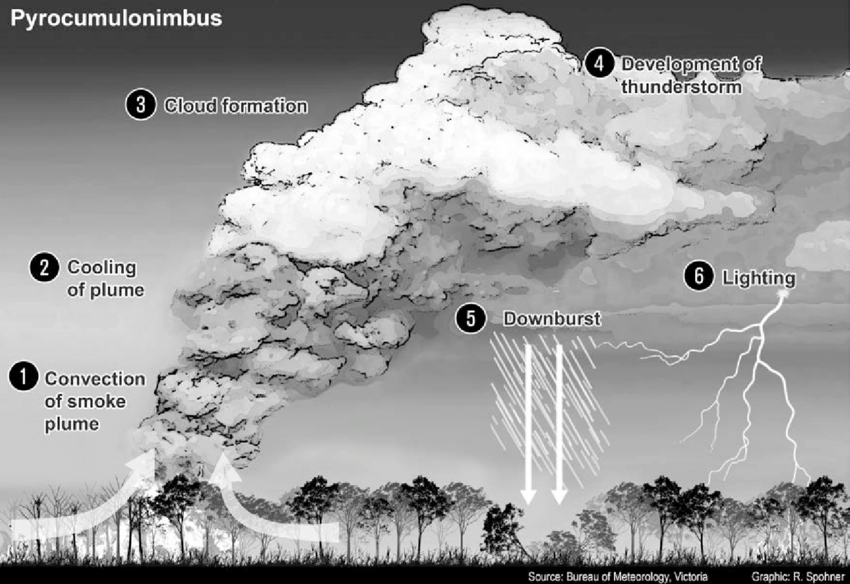Important Facts For Prelims
Wildfires Triggering Pyrocumulonimbus Clouds
- 09 Aug 2024
- 3 min read
Why in News?
Recently wildfires raging in the United States and Canada are so intense that they have created pyrocumulonimbus clouds (pyroCbs), which have the potential to spit out thunder and spark more fires.
What are Pyrocumulonimbus Clouds?
- Definition: Pyrocumulonimbus clouds are thunder clouds created by intense heat from the Earth’s surface. They are also called fire clouds.
- They are formed similarly to cumulonimbus clouds, but the intense heat that results in the vigorous updraft comes from fire, either large wildfires or volcanic eruptions.
- Conditions for its Formation:
- Pyrocumulonimbus clouds form under extreme heat (like wildfires).
- Not every wildfire produces these clouds, temperatures need to exceed 800°C, as seen in the 2019-2020 Australian bushfires.
- Intense heat from the fire causes hot air to rapidly rise, carrying water vapour, smoke, and ash that condense into pyrocumulus clouds as they cool.
- These clouds can reach up to 50,000 feet and form thunderstorm systems with lightning and strong winds.
- Pyrocumulonimbus clouds form under extreme heat (like wildfires).
- Impacts and Characteristics:
- Pyrocumulonimbus clouds can produce lightning that may ignite new wildfires several kilometres away.
- They generally generate minimal rain, aiding wildfire spread rather than suppression.
- These clouds can trigger strong winds, accelerating and complicating wildfire management.
Why are Pyrocumulonimbus Cloud Events Occurring More Often?
- Rising Temperatures and Extended Fire Seasons: Global warming leads to higher temperatures and longer dry periods, creating drier conditions that increase the frequency and intensity of wildfires and provide more opportunities for pyrocumulonimbus cloud formation.
- Increased vegetation and Drought Conditions: Warmer temperatures and changing precipitation patterns increase vegetation growth, which serves as fuel for wildfires.
- Additionally, persistent droughts dry out forests and grasslands, making them more susceptible to ignition.
- Extreme Weather Patterns: Intense and frequent heatwaves, along with altered wind patterns, can trigger and spread wildfires more rapidly, increasing the likelihood of pyrocumulonimbus clouds forming.
- Human Activities: Deforestation, land use changes, and urbanization exacerbate wildfire risks by increasing the likelihood of human-caused fires and indirectly contributing to pyrocumulonimbus cloud formation.
UPSC Civil Services Examination Previous Year Question (PYQ)
Prelims
Q. Consider the following: (2019)
- Carbon monoxide
- Methane
- Ozone
- Sulphur dioxide
Which of the above are released into atmosphere due to the burning of crop/biomass residue?
(a) 1 and 2 only
(b) 2, 3 and 4 only
(c) 1 and 4 only
(d) 1, 2, 3 and 4
Ans: (d)





